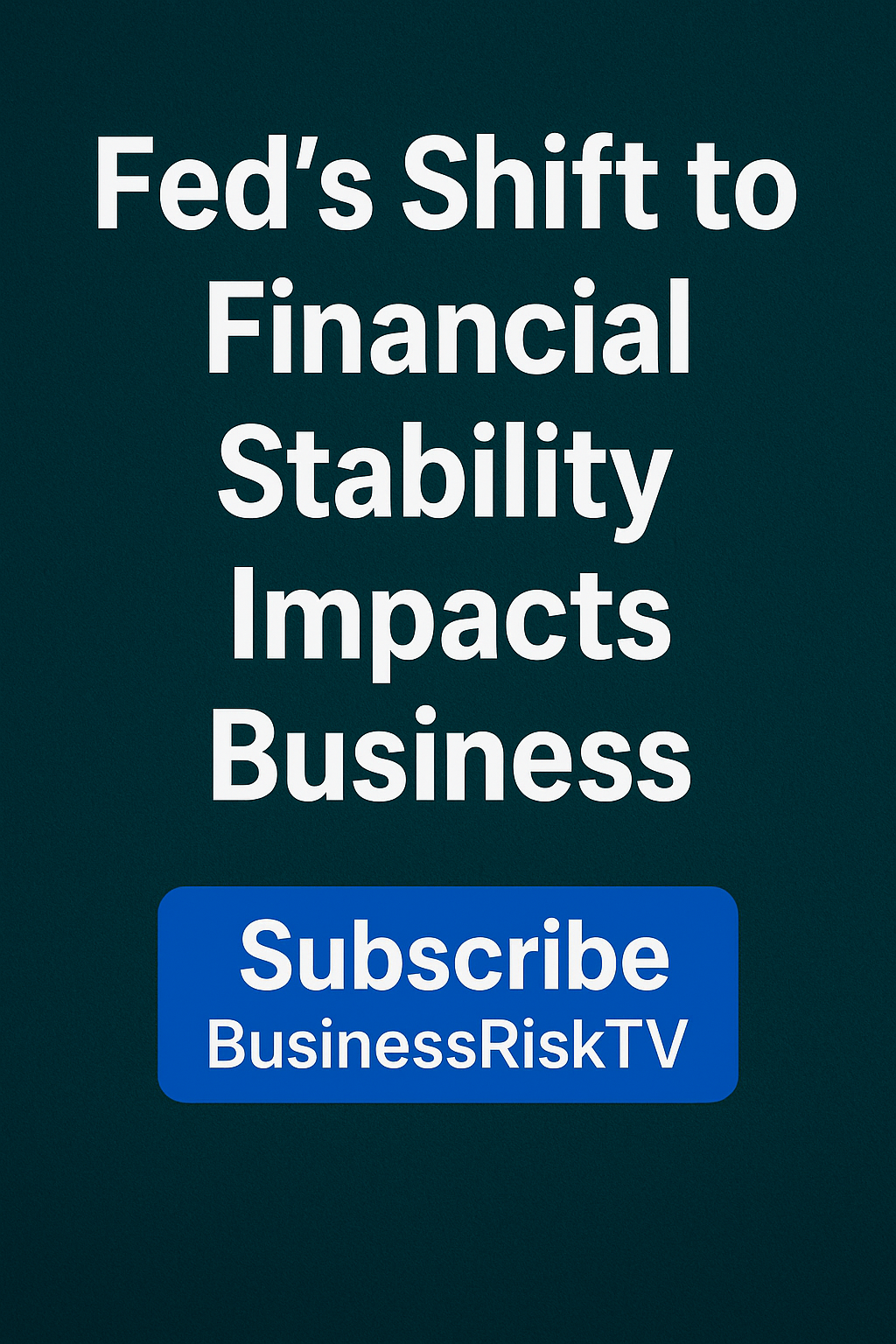Decoding the Federal Reserve’s New Priority for Business Leaders
In December 2025, the Federal Reserve cut interest rates, citing a shift in the “balance of risks.” While inflation and employment remain stated goals, a deeper analysis reveals a critical new priority is guiding policy: managing systemic financial stability and the cost of government borrowing. For business leaders, particularly those in vulnerable sectors like regional banking, this is not a minor adjustment—it’s a fundamental shift in the economic rulebook. The Fed is effectively navigating a tri-lemma: balancing price stability, employment, and the prevention of financial system stress, with the latter gaining urgent prominence. This article provides a strategic roadmap for leaders to turn this systemic challenge into a competitive advantage.
The New Reality: Financial Stability as the Fed’s Unspoken Mandate
Recent Federal Reserve communications and regulatory actions strongly indicate a reorientation of priorities, confirming a more complex operating environment.
- The Stated Mandate vs. The Emerging Focus: The FOMC’s statements continue to reaffirm the dual mandate. However, the November 2025 Financial Stability Report provides the key insight. It details an intense monitoring framework for systemic vulnerabilities—valuation pressures, excessive borrowing, and leverage—and explicitly states that “financial stability supports the objectives assigned to the Federal Reserve.” This positions financial stability not as a separate goal, but as a critical precondition for achieving the others.
- A Regulatory Shift Confirms the Priority: This shift is most concretely seen in bank supervision. The Fed’s new supervisory principles instruct examiners to focus squarely on “material financial risks threatening the safety and soundness of banks” and to de-emphasise procedural issues. This “reorientation” is a direct response to systemic threats, aiming to make the banking system more resilient.
- The Regional Bank Pressure Point: The plight of USA regional banks is central to this pivot. Many are grappling with the lingering impact of earlier rate hikes, unrealised losses on securities, and intense funding pressures. A systemic crisis in this sector is a clear and present danger. The Fed’s policy stance is now attuned to providing a lower-cost environment to help stabilise these critical institutions and prevent a broader credit crunch.
Strategic Implications: Threats and Opportunities for the Alert Leader
This new paradigm creates a distinct landscape of risks and rewards.
🔴 Primary Threats to Business Strategy
- Prolonged Policy Uncertainty: With three competing priorities, the path of interest rates will become less predictable and more reactive to financial market stress, complicating long-term planning.
- Asymmetric Regulatory Scrutiny: The focus on “material financial risk” means that risks capable of causing systemic harm or threatening a bank’s soundness will draw severe action, while other compliance issues may be downgraded.
- Volatility from Financial Channels: Economic cycles may be increasingly driven by financial system vulnerabilities (e.g., debt defaults, bank stress) rather than traditional inflation, making forecasting more difficult.
🟢 Key Opportunities for the Proactive Leader
- Strategic Capital in a Lower-Rate Window: A sustained lower-rate environment, even with elevated inflation, provides a critical window for strategic M&A, refinancing high-cost debt, or funding long-term capital projects.
- Operational Efficiency Through Smart Compliance: The regulatory shift allows companies to streamline compliance, focusing resources only on mitigating material financial risks, thereby reducing costs and complexity.
- Competitive Advantage for Strong Balance Sheets: Companies with robust liquidity and low leverage will be highly attractive to banks operating under the new supervisory principles, gaining better and more reliable access to credit.
6 Essential Risk Management Steps in the New Financial Stability Era
Business leaders must act now to future-proof their organisations.
1. Integrate Financial Shock Scenarios into Core Planning
Move beyond traditional recession models. Stress test your business against sharp asset price corrections, sudden credit crunches, and counterparty failures. Model how a regional banking crisis would impact your liquidity and supply chain.
2. Recalibrate Risk Management to the “Materiality” Standard
Audit your internal controls. Align your risk framework with the Fed’s new lens by ruthlessly prioritising risks that could cause material financial harm to your enterprise. De-prioritise non-material procedural issues to free up resources.
3. Fortify Liquidity with a “Bank-Stress” Assumption
Do not assume bank credit lines are infallible. Diversify your funding sources—explore direct capital markets access, asset-based lending, or strategic cash reserves. Treat your liquidity buffer as a strategic asset.
4. Proactively Engage with Your Banking Partners
Initiate discussions with your regional and national banks. Understand how the new supervisory principles are shaping their risk appetite and lending criteria. Position your company as a low-risk, “flight-to-quality” partner to secure essential credit.
5. Decode Fed Signals for Strategic Foresight
Closely monitor the Fed’s Financial Stability Reports and speeches by supervision-focused officials. These documents are no longer academic; they are early-warning systems for sectors the Fed views as vulnerable.
6. Identify Strategic Investments in a Dislocated Market
Proactively identify potential acquisition targets or assets that may become undervalued due to financial stress in their sector or reliance on troubled banks. Prepare to act when the Fed’s stability focus creates market dislocations.
Conclusion: Leading in the Age of the Tri-Lemma
The Federal Reserve’s elevated focus on financial stability and sovereign debt costs has irrevocably changed the strategic environment. For business leaders, success will no longer come from simply forecasting inflation or jobs data. It will come from understanding financial system vulnerabilities, building resilient balance sheets, and moving with agility when the Fed’s actions create new openings.
The businesses that thrive will be those that see this not merely as a threat to be managed, but as a landscape ripe with opportunity—where strong fundamentals are rewarded, strategic capital is deployed wisely, and risk management is a core competitive discipline. The era of the Fed’s tri-lemma has begun. It is time to lead accordingly.
#FedPivot #FinancialStability #BusinessStrategy #BusinessRiskTV #RiskManagement
Get help to protect and grow your business faster with BusinessRiskTV
Find out more about growing your business faster with BusinessRiskTV
Subscribe for free business risk management ideas risk reviews and cost reduction tips
Connect with us for free business risk management tips
Read more business risk management articles and view videos for free
Connect with us for free alerts to new business risk management articles and videos
The Fed’s Pivot: Navigating a New Era of Financial Stability-Driven Policy




